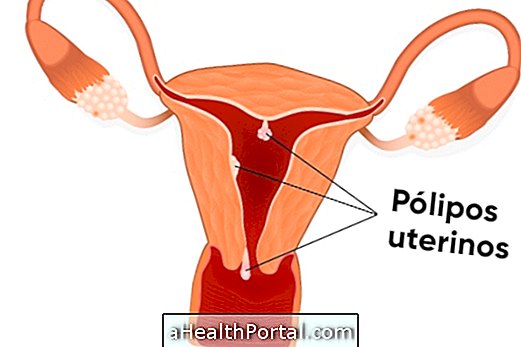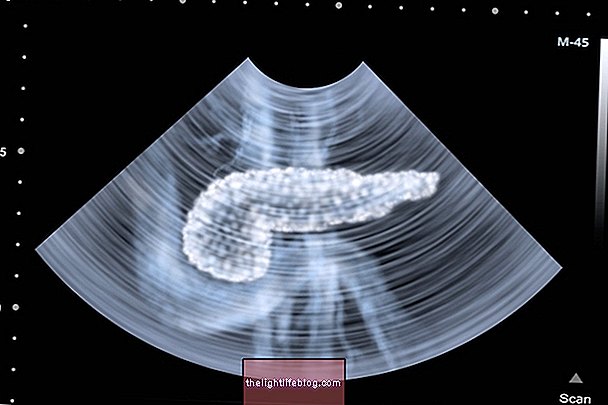Uterine polyps usually have no symptoms and are accidentally discovered on a routine examination by the gynecologist. However, in some women, polyps may cause the following symptoms:
- Vaginal bleeding after menopause (after 1 year without menstruation);
- Menstruation abundant, being necessary to use more than 1 pack of absorbent in each cycle;
- Irregular menstruation;
- Difficulty getting pregnant;
- Vaginal bleeding after intimate contact;
- Intense menstrual cramps;
- Sweating with bad smell.
The causes of uterine polyps are not yet fully understood, but women who do hormone replacement at menopause have a greater tendency to develop this type of polyp. Learn more about what can cause the uterine polyp.

Is uterine polyp dangerous?
Most polyps in the uterus are benign, so although they may cause symptoms, they do not put a woman's life at risk. However, there are some cases in which the polyp may become cancer, however, there are no specific symptoms of malignant uterine polyp.
To find out if a polyp is benign or malignant it is important to go to the gynecologist to make an observation of the polyp every 6 months. If the polyp is growing over time, there is an increased risk of being malignant, and in these cases, the doctor usually undergoes a small surgery in the office with local anesthesia to remove the polyp and send it for laboratory analysis.
If the results indicate that the polyp is malignant, the doctor will discuss the treatment options, but usually include use of hormonal drugs and surgery to remove all polyps or remove the uterus, according to the woman's age and her desire in have children. Learn more about how uterine polyp treatment is done.
How to know if I have a uterine polyp
Since most polyps in the uterus do not cause any symptoms, the only way to confirm their presence is to have a transvaginal ultrasound examination or colposcopy, which evaluates possible changes in the lining of the uterus.
If an endometrial polyp is observed in young women who have not yet entered menopause, the gynecologist usually decides not to perform any treatment, preferring to wait for 6 months and then re-evaluate whether the polyp has grown or decreased in size.

























